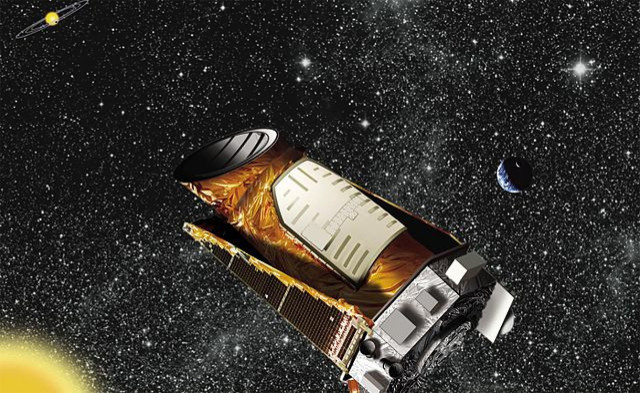Kepler Space Telescope Stalled 40 Million Miles Away By Mechanical Trouble

NASA’s eye in the sky that looks for exoplanets is running into some mechanical trouble 40 million miles away.
The Kepler space telescope looks for alien worlds by searching for the flickers of stars that dim slightly when planets pass across their faces. Kepler has thus far found 2,730 planet candidates, plus 132 confirmed exoplanets.
On May 12, Kepler tilted unexpectedly and entered safe mode. NASA hasn’t been able to take the spacecraft out of safe mode, and further investigation has showed one of the four gyroscopic reaction wheels that helps hold Kepler in a precise position has failed. Another wheel failed in July.
Unless at least one of the two malfunctioning wheels can be brought back online, Kepler might not be able to make new observations. The craft has enough fuel to power the thrusters that keep it stable for a while, but without gyroscopically-assisted precision, Kepler’s planet-searching days may be over.
"I wouldn't call Kepler down and out just yet," NASA administrator John Grunsfeld said during a teleconference on Wednesday, according to Nature. But "we do need three wheels to do the exoplanet science."
Kepler blasted off from Earth in 2009 and entered an “Earth-trailing” orbit around the sun. It’s primary mission phase ended in 2012, but NASA extended the spacecraft’s term of duty until at last 2016.
“Even if data collection were to end, the mission has substantial quantities of data on the ground yet to be fully analyzed, and the string of scientific discoveries is expected to continue for years to come,” NASA said in a statement on Tuesday.
© Copyright IBTimes 2024. All rights reserved.





















